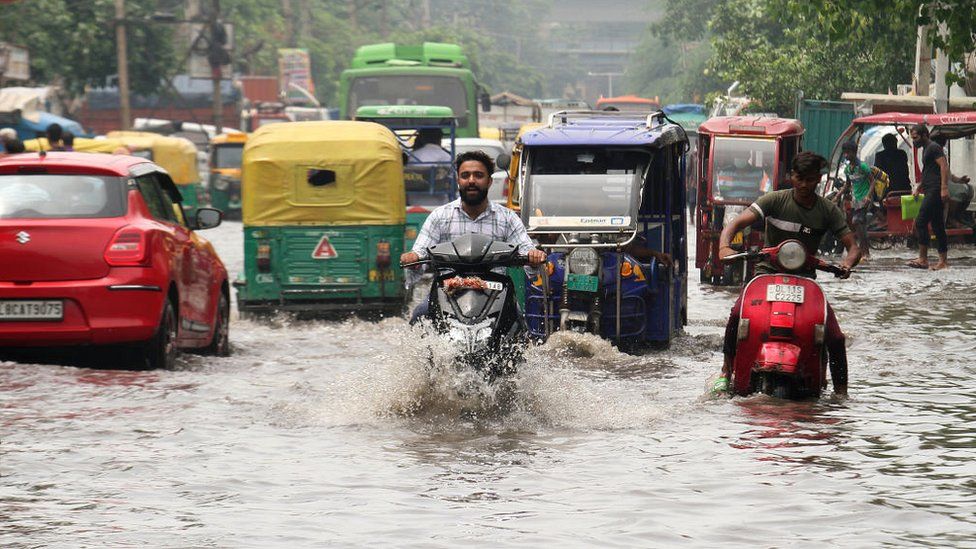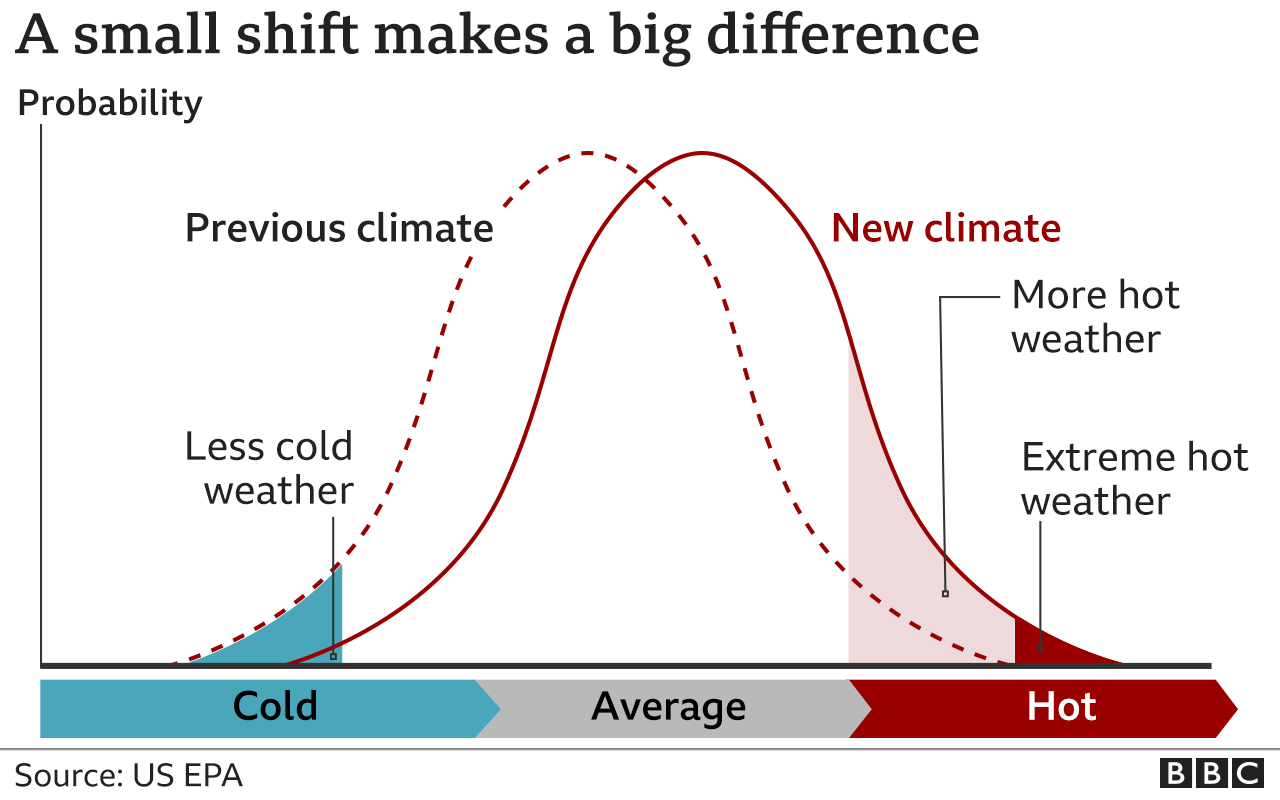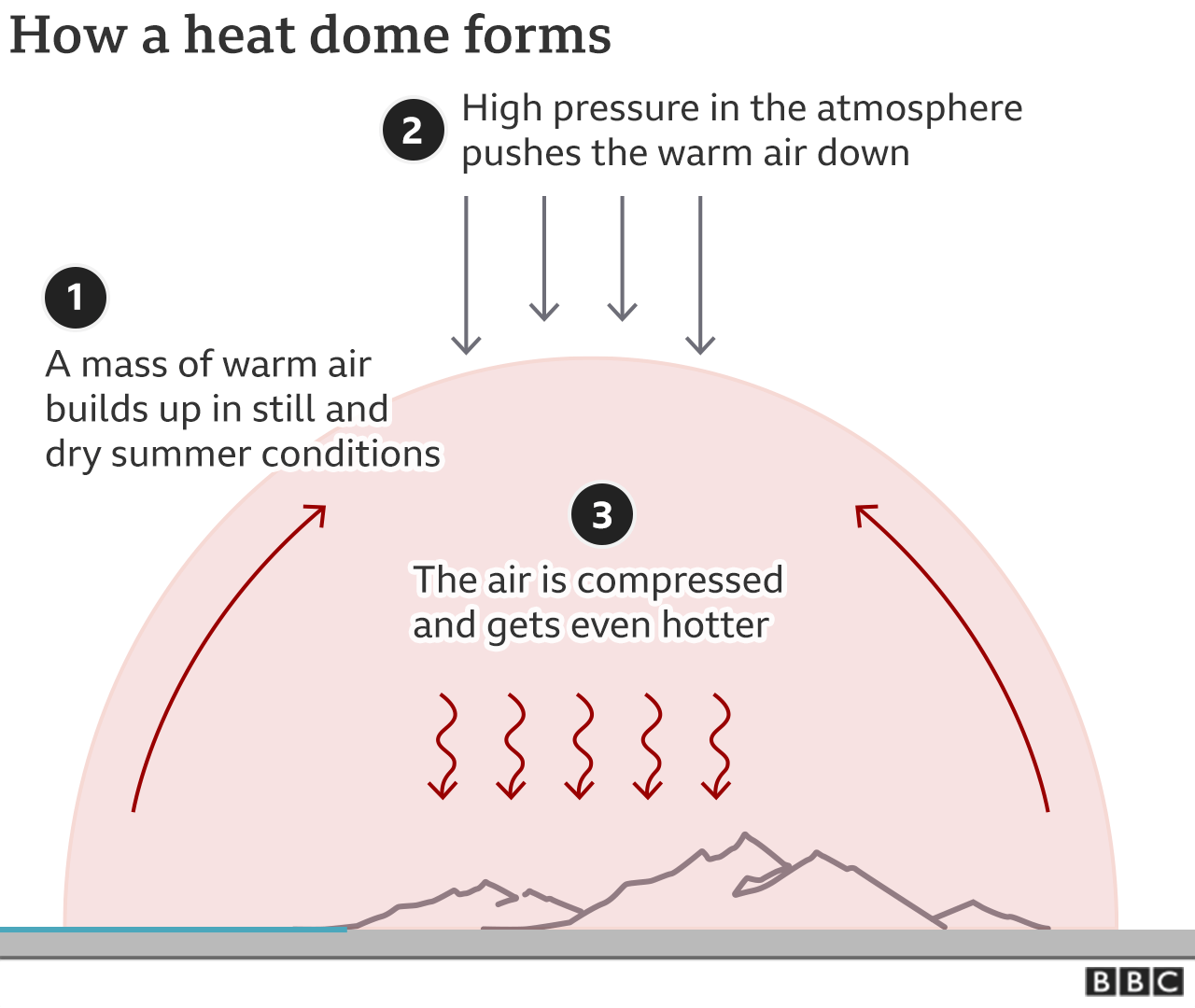Extreme weather: What is it and how is it connected to climate change?
![]()
Extreme weather: What is it and how is it connected to climate change?
By Matt Taylor
BBC WeatherPublished1 day agoShareRelated Topics

Heatwaves, deadly floods and wildfires all mean people are experiencing the link between extreme weather and climate change.
Emissions from the burning of fossil fuels have been trapping heat in the atmosphere since the start of the industrial era. As a consequence, average temperatures have risen by 1.1C.
This additional energy is unevenly distributed and bursts out in extremes like those we’ve been seeing. Without reductions in global emissions, this cycle will keep going.
Here are four ways climate change is contributing to extreme weather.
1. Hotter, longer heatwaves
To understand the impact of small changes to average temperatures, you need to to think of them as a bell curve – extreme cold and hot are at either end and the bulk of temperatures are in the middle. A small shift in the centre means more of the curve touches the extremes – and so heatwaves become more frequent and extreme.

In the UK, warm spells have more than doubled in length in the past 50 years, according to the Met Office.
Heatwaves can be made longer and more intense by another weather phenomenon – a heat dome.ADVERTISEMENT
In an area of high pressure, hot air is pushed down and trapped in place, causing temperatures to soar over an entire continent.

When a storm distorts the jet stream, which is made of currents of fast-flowing air, it is a bit like yanking a skipping rope at one end and seeing the ripples move along it.
These waves cause everything to slow drastically – and weather systems can become stuck over the same areas for days on end.
This same type of stuck weather pattern is also responsible for the record warmth experienced in India and Pakistan this year. Persistent high pressure and lower than normal rainfall lead to India’s hottest March since records began 122 years ago.
Karachi, Pakistan, also notched up its hottest March day and night, amid the country’s hottest March on record. As the heatwave built through April, Pakistan again saw records tumble. Jacobabad registered 49C at one point – with central and northwest India also experiencing a record-breaking month.





















